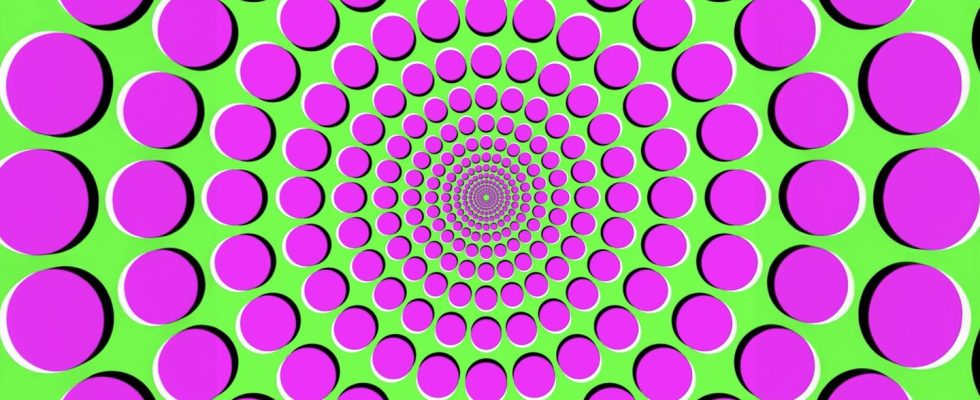Watch the video: Only discovered in 1999: optical illusions have been astonishing for a quarter of a century.
If we let our gaze wander over this graphic, the magenta colored dots appear to move outwards. If we stare fixedly at the center of the graphic, the movement stops.
But as soon as we let our gaze wander again, the movement begins again. The effect is a peripheral drift illusion, an illusion of movement. The optical illusion was first described by Jocelyn Faubert and Andrew Herbert in 1999. Here, magenta, black and light pink circles are superimposed in such a way that the main circles appear to have a light and a dark shadow or glow. According to the discoverers, what is important is the large, clear contrast. The illusion is named after the effect that the illusion of movement only occurs at the edges, the periphery, and the retina, but not in its center. The movements always follow the direction dark to light.

